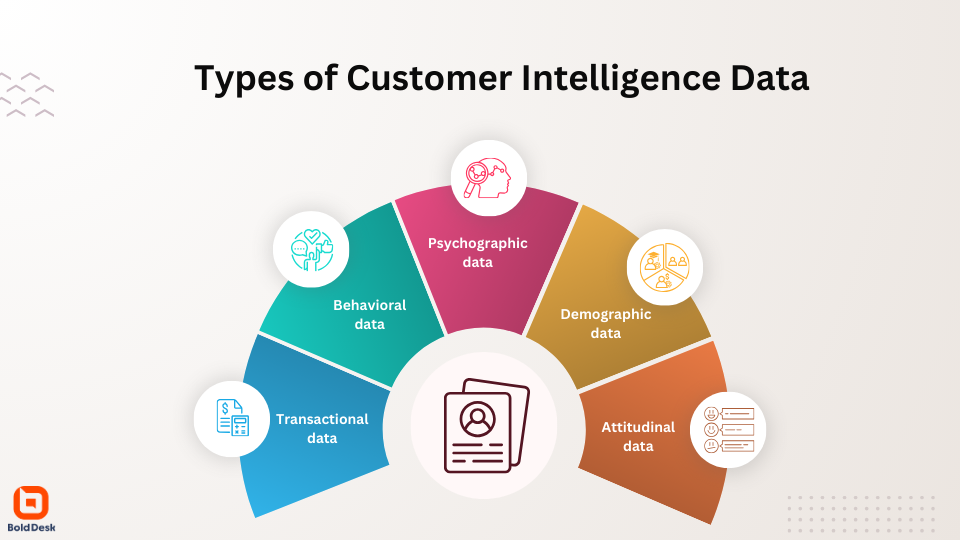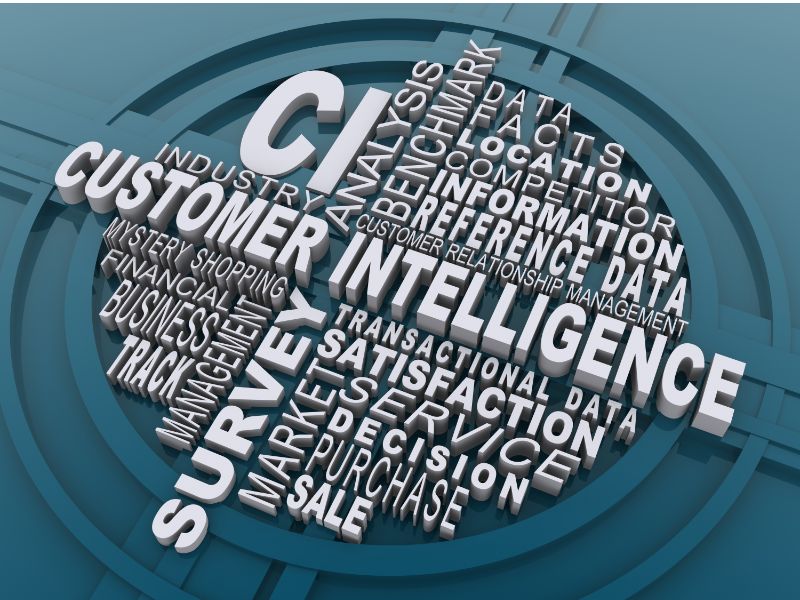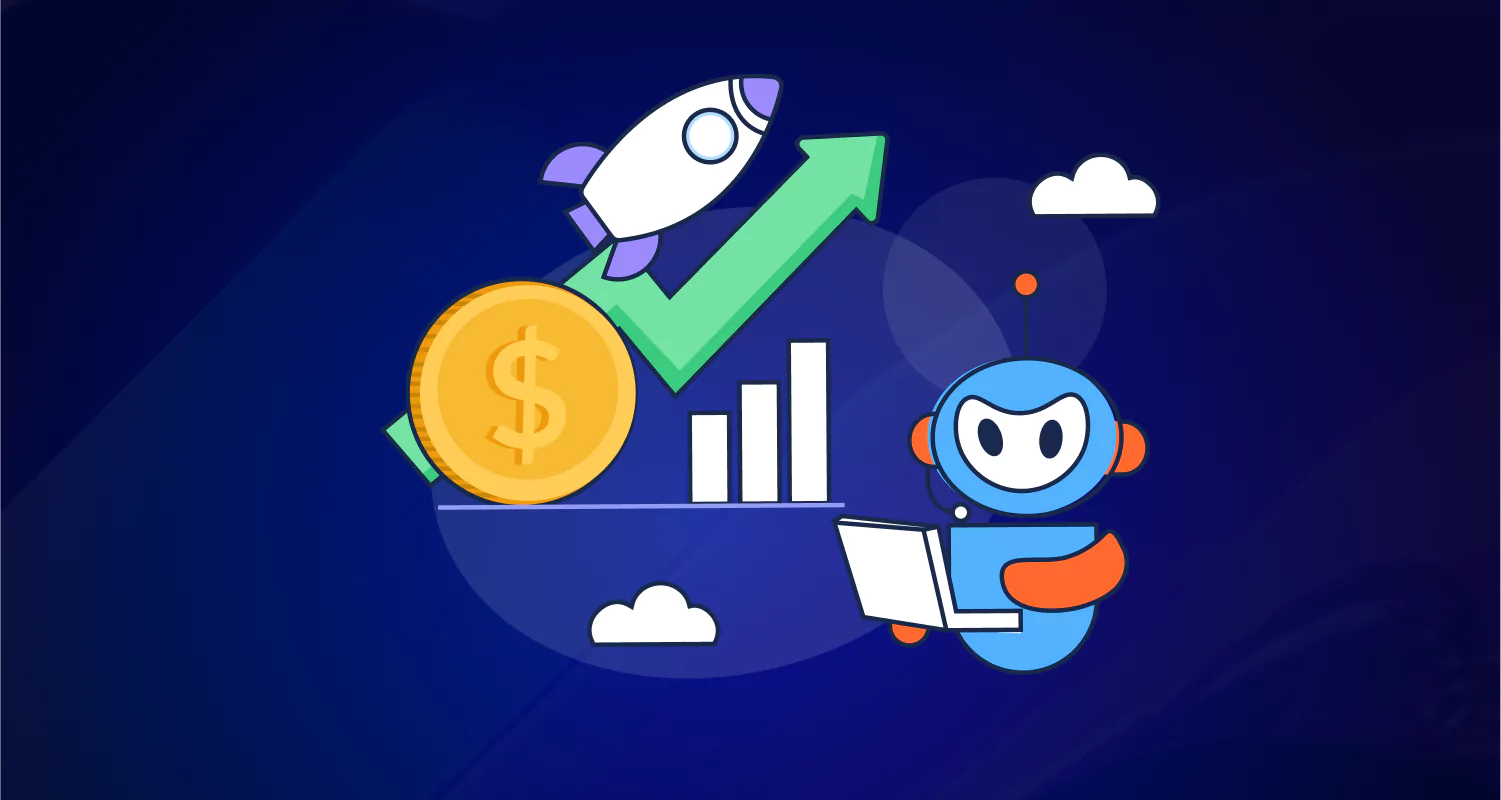In the information age, understanding your customers has never been more critical.
With an ever-increasing amount of data at their fingertips, businesses can no longer afford to make decisions based on hunches, since their competitors certainly are not.
Customer intelligence (CI) is a powerful tool that can assist businesses in truly understanding their customer base’s needs, behaviors, and preferences.
This article will dig into the concept of customer intelligence, its importance, its different types, and how to use it to drive your business forward.
What is customer intelligence?
Customer intelligence refers to collecting and analyzing information related to customer behavior, needs, and preferences to understand them better.
It involves collecting data from various sources, such as transaction records, social media interactions, and customer feedback.
This data is processed using analytical tools to provide actionable insights that form marketing strategies, product development, and customer service improvements.
Types of data used in customer intelligence and use cases
Customer intelligence analyzes various data types that help businesses understand their customers better.

Following is an overview of each type and strategies to utilize them.
Transactional data
Transactional data is any information about the purchasing history of customers. This information includes:
- What they bought
- When they bought
- How much they spent
- Preferred payment methods
Use case: Use transactional data to create loyalty programs or offer tailored discounts. Companies can also predict future buying behavior based on past transactions.
Behavioral data
This data tells how customers interact with your products, services, and websites. These include:
- Purchasing patterns
- Browsing history
- Usage frequency
Use case: Implement personalized recommendations based on past behavior.
For example, an e-commerce site can suggest products like or related to those a customer has previously bought or viewed.
Psychographic data
Psychographic data provides insight into customers’ needs and preferences, which helps businesses create more targeted marketing strategies.
Some kinds of psychographic data include:
- Lifestyle
- Interests
- Values
- Attitudes
- Motivations
- Personality traits
Use case: Craft marketing campaigns that resonate with specific psychographic segments.
For instance, a company selling outdoor gear might target adventurous and nature-loving individuals by aligning its messaging with these values.
Demographic data
Demographic data is any information about the personal and essential characteristics of customers.
These characteristics include:
- Age
- Gender
- Income
- Education
- Marital status
- Occupation
- Location

Use case: Tailor marketing messages and product offerings based on demographic segments.
For instance, if a company sells skincare products, it might create different marketing campaigns targeting different age groups or genders.
Attitudinal data
Attitudinal data provides information about customers’ sentiments on the company, its brand, its products and services, and its support team.
Some kinds of attitudinal data include:
- Customers’ explicit opinions
- Customers’ perceptions about product or service quality
- Satisfaction levels
Use case: Gather feedback through surveys, reviews, or social media interactions to understand customer sentiment.
Utilize this data to improve products and services or tailor customer support experiences to address expectations.
How to collect customer intelligence data
The method used to collect customer intelligence data depends on the nature of the business, industry, and the specific information needed.
Following are some common methods.
Surveys and questionnaires
Employ online or offline surveys to gather valuable customer insight.
Craft concise questions to extract specific feedback, preferences, and opinions, and ensure an efficient and user-friendly experience.
Implement feedback forms strategically at various touchpoints, such as post-purchase, on your company website.
Collecting immediate feedback allows for real-time adjustments and improves the customer experience.

Social media listening
Leverage social media platforms to track and analyze customer sentiments, comments, and discussions.
Use advanced tools to monitor brand mentions, identify trends, and promptly respond to customer feedback.
Customer interaction history
Extract insights from the stored history of all customer interactions with support teams. Analyze common customer questions, issues, and feedback to address concerns and enhance customer satisfaction.
Online reviews and ratings monitoring
You can also collect customer intelligence data by monitoring and analyzing online reviews and ratings on your company websites, industry review sites, and community forums.
Use customer feedback to identify strengths and weaknesses, address concerns, and showcase positive experiences.
Loyalty programs and data analysis
Analyze loyalty program data, such as repeat purchases, reward redemptions, and engagement levels.
More than 83% of customers globally responded that being part of a loyalty program affects their choice in making repeat purchases from the same brand.
Monitor the data to see if that’s true for your program.
How to use customer intelligence analytics
Businesses can use customer intelligence analytics to gain a deeper understanding of their customer base and tailor their products to them.
Here are several ways that businesses can utilize customer intelligence analytics to drive success.
To segment your customers and customize offerings
Delve into customer intelligence data to categorize your audience based on their actions, preferences, and demographic details.
By doing so, you can customize marketing initiatives and create personalized interactions, leading to heightened satisfaction and more active engagement among customers.
Anticipate customer actions
Employ predictive analytics to forecast customers’ future actions and preferences. This forward-looking approach aids in:
- Identifying upcoming trends
- Pinpointing customer requirements
- Spotting potential attrition
- Enabling preventative actions to be taken
Enhance your products and services
Gain insight into customers’ likes and dislikes by examining their feedback and how different customers interact with the brands.
These valuable revelations about customers’ preferences can help you improve your products and services to match customers’ expectations.
Create and refine effective marketing strategies
Evaluate the effectiveness of your marketing tactics across various platforms.
Pinpoint the mediums or campaigns that deliver the highest returns on investment and refine your marketing strategies to enhance efficiency and reduce expenditure.
Boost customer retention and loyalty
Determine the elements instrumental in retaining customers and nurturing their loyalty. Harness this information to design loyalty schemes or initiatives that resonate with your customers, cultivating enduring connections.
Customer intelligence best practices
The following are customer intelligence best practices that companies in a variety of sectors can apply.

Develop a complete strategy
Develop a comprehensive plan to collect relevant data from various sources, identify the best tools and methods to analyze the data, and then schedule time to examine and discuss the results.
By having a complete strategy for collecting, analyzing, and utilizing customer intelligence data, you can aid its adoption and benefits to your company.
Collect customer data
Gather information about your customers from different sources to help you understand their behaviors, preferences, and needs. Customer data can be collected from sources such as:
- Interactions with customer service
- Surveys
- Social media
- Purchasing patterns and website usage
Businesses should not only gather valuable customer data but also ensure it’s used responsibly.
Analyze customer intelligence data
In analyzing customer intelligence data, businesses can gain deeper insights into their customers’ behaviors and preferences, leading to more personalized and effective strategies that drive customer satisfaction and business success.

Utilize insights from customer intelligence analytics
Provide your organization with useful conclusions after the analysis stage.
Dashboards and reports facilitate the revelation and exchange of customer intelligence insights.
To inform future marketing and customer care initiatives, analytics findings should be discussed and solutions both implemented and tracked to test their efficacy.
Build a customer-centric culture
Make sure your team always has the consumers at the center of everything they do.
This involves prioritizing the needs and preferences of the consumers, or at least knowing how to make them feel you do.
Businesses with happy customers yield greater profitability, attract more consumers, and improve customer satisfaction.
For this reason, before executing actions that may affect customer experience, firms should evaluate customer intelligence.
Privacy and compliance
Customers have very high expectations when it comes to how you secure their data. Prioritize ethical use of consumer information by following data protection standards and respecting customer privacy.
This is crucial for preserving your reputation and building trust with clients. Mishandling data can harm your business on many fronts.
How can customer intelligence benefit your business?
Customer intelligence in a business can significantly impact various aspects of operations. Following are some key advantages.
Increases customer loyalty
Customers are more likely to stick with a brand that understands their needs and consistently meets or exceeds their expectations.
Personalization of experiences based on customer intelligence and ensuring customer satisfaction leads to increased customer loyalty.
Enhances customer experience
By understanding customer desires and behaviors from customer intelligence data, businesses can tailor their marketing, services, and interactions to meet customers’ individual preferences, leading to personalized and satisfying experiences.
Better customer service
Metrics of customer intelligence data help highlight common support issues and customer pain points, enabling support teams to plan faster and more effective resolutions.
Analytics results also help form training and development programs for customer service representatives to improve their skills and knowledge.
Informed decision-making
Insights derived from data empower companies to make well-informed choices regarding their marketing tactics, product innovation, and the distribution of resources.

Understand customers better
Customer intelligence offers in-depth insight into customers’ interactions with a business, helping these businesses to know their clients better.
This enables businesses to accurately forecast the motives driving their customers’ actions and purchasing decisions.
For instance, by grasping why customers initiate calls, a company can better anticipate (and strategize to diminish) the calls received in a call center.
Competitive advantage
Businesses that leverage customer intelligence platforms effectively gain a competitive edge.
By staying aware of market trends and consumer preferences, companies can anticipate changes in the industry and adapt their strategies more rapidly than competitors.
Increases sales and revenue
By understanding and predicting their customers, businesses can take advantage of and upsell, cross-sell, and promote repeat purchases.
This leads to more sales opportunities and ultimately increased revenue.
Embrace customer intelligence as a cornerstone of your strategy
In a commercial environment, possessing customer intelligence is not merely a benefit but essential.
Grasping the subtle details of how customers act and what they prefer enables companies to lay the groundwork for ongoing expansion, enhanced customer contentment, and a distinct competitive advantage in the marketplace.
Organize a live demo to experience how BoldDesk can help your company enhance its customer intelligence. Start a free trial to experience its many capabilities. If you have any questions, feel free to contact the BoldDesk support team.
Did you find this article to be useful? How should we use customer intelligence analytics to collect and analyze customer data to improve customer service?
Please feel free to leave comments in the space provided below with your thoughts and recommendations.
Related articles


















 Email Ticketing System
Email Ticketing System Shared Inbox Software
Shared Inbox Software Multi Brand Help Desk
Multi Brand Help Desk Internal Help Desk Software
Internal Help Desk Software Trouble Ticketing Software
Trouble Ticketing Software Mobile Help Desk
Mobile Help Desk 


















